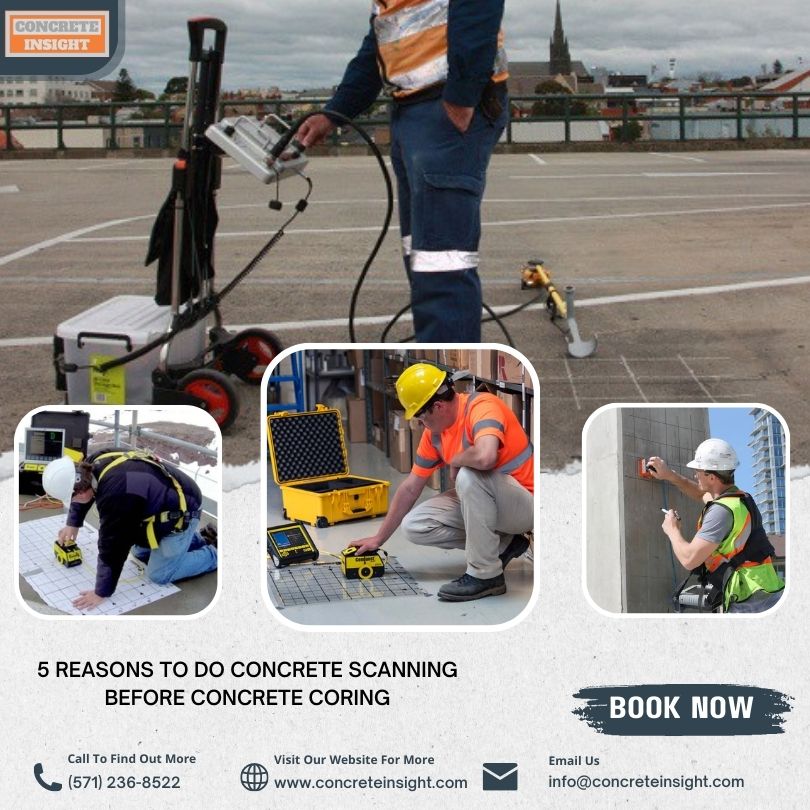Picking the Right Concrete Scanning Tools
Picking the Right Concrete Scanning Tools
Blog Article
Beyond the Surface: Leveraging Advanced Concrete Scanning Techniques for Unmatched Precision and Insight
Advanced concrete scanning techniques have actually arised as crucial devices in this quest, supplying a glance underneath the surface to reveal a world of critical understandings. By taking advantage of sophisticated innovations, experts can reveal anomalies, examine the condition of concrete frameworks, and make notified decisions that form the training course of tasks.
Value of Advanced Concrete Scanning
The importance of using advanced concrete scanning strategies depends on the unmatched accuracy they use for discovering sub-surface anomalies and guaranteeing structural integrity. By employing innovative innovations such as ground-penetrating radar (GPR), electro-magnetic induction, and advanced sonar imaging, building experts can dive underneath the surface of concrete structures with a degree of precision that far surpasses typical inspection techniques. Concrete Scanning. These techniques enable the recognition of hidden threats like rebar rust, voids, channels, or post-tension cable televisions that might endanger the security and security of a framework gradually
In addition, advanced concrete scanning gives important understandings into the general condition of a concrete aspect without the need for invasive steps, decreasing the threat of triggering damages throughout the analysis procedure. The capacity to pinpoint the exact place and depth of potential concerns permits targeted repairs and upkeep, eventually lengthening the lifespan of the structure and enhancing its efficiency. Basically, the value of advanced concrete scanning can not be overstated in the world of building and framework upkeep, where precision and reliability are paramount.
Sorts Of Cutting-Edge Technologies

Anomalies and Flaw Discovery

Along with GPR, concrete scanning strategies like thermography and impact-echo testing are likewise reliable in finding flaws and anomalies. Thermography makes use of infrared modern technology to identify variations in surface temperature, suggesting prospective areas of issue such as delamination or dampness access. On the other hand, impact-echo testing entails evaluating acoustic actions to discover spaces, splits, and various other flaws within the concrete. By leveraging these advanced techniques, professionals can proactively resolve architectural problems, ensuring the long life and safety and security of concrete structures.
Assessing Concrete Condition
Exactly how can engineers accurately assess the condition of concrete frameworks to guarantee their durability and security? Different innovative concrete scanning techniques are utilized for this objective. Ground-penetrating radar (GPR) is commonly utilized to you can find out more evaluate the inner structure of concrete, finding voids, fractures, and other anomalies that may compromise its toughness.
Furthermore, visual inspection remains a fundamental component of concrete problem assessment. Engineers aesthetically analyze the surface for signs of damage, such as spalling, breaking, or discoloration. Incorporating non-destructive testing techniques with aesthetic evaluations permits for a comprehensive evaluation of concrete problem, enabling designers to identify possible issues early on and carry out timely upkeep or repairs. By leveraging these sophisticated methods, designers can make certain the browse around this web-site lasting longevity and safety of concrete frameworks.
Enhancing Decision-Making Processes
In the realm of infrastructure management, maximizing decision-making procedures is imperative for making certain the effective maintenance and longevity of concrete structures. Boosted decision-making procedures in concrete monitoring involve using innovative scanning methods to gather in-depth information on the problem of structures. By leveraging technologies such as ground-penetrating radar and 3D imaging, stakeholders can make educated choices pertaining to reinforcement, replacement, or fixing techniques.
These progressed scanning strategies offer important understandings into the interior structure of concrete, recognizing possible concerns such as gaps, splits, or rust that might not show up on the surface area. This level of in-depth details permits positive upkeep preparation, minimizing the danger of structural failings and increasing the total lifespan of concrete frameworks.
Moreover, by including electronic documentation and evaluation tools into the decision-making procedure, stakeholders can track the development of concrete problems gradually, enabling predictive upkeep techniques and enhancing source allocation. Eventually, the integration of advanced concrete scanning strategies improves decision-making procedures by providing unmatched accuracy, understanding, and effectiveness in facilities administration.
Conclusion
Finally, advanced concrete scanning techniques use unequaled accuracy and understanding in spotting anomalies, issues, and assessing the problem of concrete frameworks. By leveraging innovative technologies, decision-making processes can be boosted, causing even more efficient and informed solutions for maintaining and repairing concrete framework. These techniques play an important duty in making certain the safety and longevity of concrete structures, making them an essential device in the field of construction and design.
Moreover, advanced concrete scanning provides indispensable insights right into the overall condition of a concrete aspect without the requirement for intrusive steps, lessening the danger of triggering damage during the assessment procedure - Concrete Scanning. An additional cutting-edge modern technology is 3D X-ray scanning, which supplies detailed pictures of the internal structure of concrete, moved here supplying valuable information without the requirement for harmful testing. In Addition, Concrete Cover Meters are used to gauge the density of concrete cover over support bars properly. Enhanced decision-making procedures in concrete administration entail using sophisticated scanning strategies to collect thorough data on the condition of frameworks.In conclusion, advanced concrete scanning techniques supply unequaled precision and understanding in identifying anomalies, defects, and evaluating the problem of concrete frameworks
Report this page